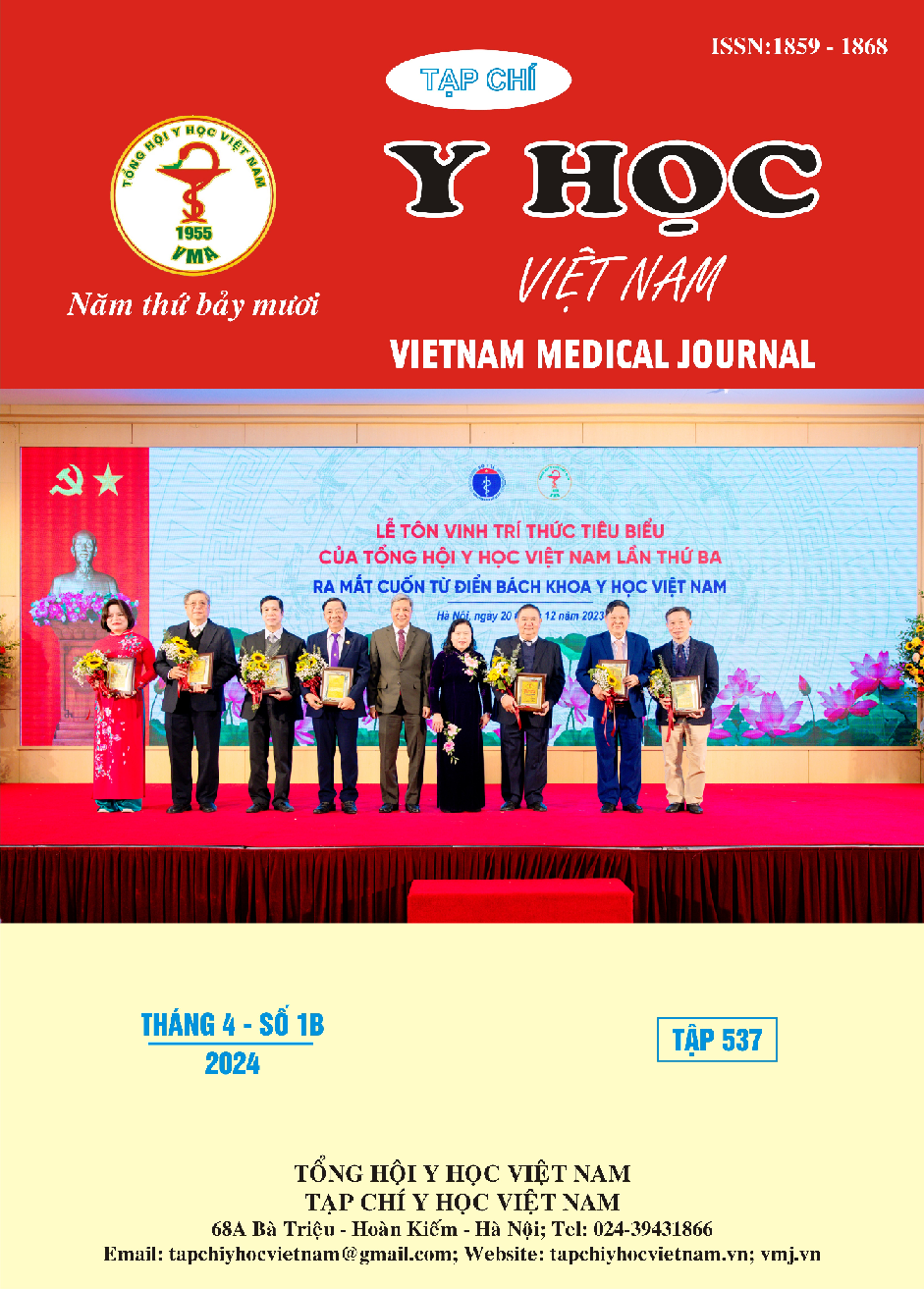KẾT QUẢ SỚM CỦA PHẪU THUẬT CẮT GAN PHẢI THEO GIẢI PHẪU ĐIỀU TRỊ UNG THƯ BIỂU MÔ ĐƯỜNG MẬT TRONG GAN TẠI BỆNH VIỆN K
Nội dung chính của bài viết
Tóm tắt
Mục tiêu: Đánh giá kết quả sớm của phẫu thuật cắt gan phải theo giải phẫu điều trị ung thư biểu mô đường mật trong gan (UTĐMTG). Đối tượng và phương pháp: nghiên cứu (NC) mô tả hồi cứu các trường hợp được phẫu thuật cắt gan phải theo giải phẫu do ung thư biểu mô đường mật trong gan tại khoa Ngoại gan mật tụy – Bệnh viện K từ tháng 1/2021 đến tháng 12/2023. Kết quả: Phẫu thuật được thực hiện cho 14 bệnh nhân (BN). Tuổi trung bình: 61,8 ± 10,1 tuổi; tỉ lệ nam/nữ: 1,33/1; tỷ lệ mắc viêm gan B hoặc C hoặc đồng nhiễm viêm gan B, C là 7,1%. CA 19 – 9 tăng trong 57.1% trường hợp và CEA tăng trong 7,1% trường hợp. Trên phim chụp cắt lớp vi tính, đa số bệnh nhân (BN) có 1 khối u chiếm 78,6%, kích thước u > 5cm chiếm 28.6%, nằm ở ≥ 2 hạ phân thùy chiếm 71,4%. Tất cả các BN đều được vét hạch cuống gan, hạch sau đầu tụy và hạch dọc động mạch gan chung. Thời gian phẫu thuật trung bình: 166,3 ± 55,4 phút. Biến chứng gặp ở 5 BN bao gồm: cổ trướng (21,4%), suy gan (7,1%), nhiễm khuẩn huyết (7,1%), viêm phổi (7,1%). Các biến chứng này được phân độ theo bảng phân loại của Clavien–Dindo: I (60%), II (40%). Giải phẫu bệnh sau mổ: đa số ở giai đoạn II và IIIB (42,9%), nhân vệ tinh (50%), xâm nhập mạch (28,6%), di căn hạch (9,7%). Không trường hợp nào tử vong trong thời gian nằm viện. Thời gian nằm viện trung bình: 14,3 ± 8,1 ngày. Kết luận: Phẫu thuật cắt gan phải theo giải phẫu điều trị UTĐMTG là khả thi, an toàn và hiệu quả.
Chi tiết bài viết
Từ khóa
cắt gan phải, cắt gan theo giải phẫu, ung thư biểu mô đường mật trong gan.
Tài liệu tham khảo
2. Đạt T Q (2010), "Nghiên cứu đặc điểm lâm sàng, cận lâm sàng và kết quả phẫu thuật cắt gan do ung thư đường mật trong gan", Luận văn bác sĩ nội trú Đại học Y Hà Nội.
3. Harrison L, Fong Y, Klimstra D, et al (1998), "Surgical treatment of 32 patients with peripheral intrahepatic cholangiocarcinoma", British journal of surgery, 85 (8), pp. 1068-1070.
4. Belghiti J, Noun R, Malafosse R, et al (1999), "Continuous versus intermittent portal triad clamping for liver resection: a controlled study", Annals of surgery, 229 (3), pp. 369.
5. Lê Lộc (2010), "Kinh nghiệm qua 1245 trường hợp cắt gan ung thư", Tạp chí gan mật Việt Nam, 13, pp. 36 – 45.
6. Conci S, Ruzzenente A, Viganò L, et al (2018), "Patterns of distribution of hepatic nodules (single, satellites or multifocal) in intrahepatic cholangiocarcinoma: prognostic impact after surgery", Annals of Surgical Oncology, 25, pp. 3719-3727.
7. Ohtsuka M, Ito H, Kimura F, et al (2002), "Results of surgical treatment for intrahepatic cholangiocarcinoma and clinicopathological factors influencing survival", Journal of British Surgery, 89 (12), pp. 1525-1531.
8. Huang J L, Biehl T R, Lee F T, et al (2004), "Outcomes after resection of cholangiocellular carcinoma", The American journal of surgery, 187 (5), pp. 612-617.
9. Sakamoto Y, Kokudo N, Matsuyama Y, et al (2016), "Proposal of a new staging system for intrahepatic cholangiocarcinoma: analysis of surgical patients from a nationwide survey of the Liver Cancer Study Group of Japan", Cancer, 122 (1), pp. 61-70.
10. Ngô Đắc Sáng (2018), "Nghiên cứu các biến chứng sau phẫu thuật cắt gan do ung thư theo phương pháp Tôn Thất Tùng", Học viện Quân Y.


